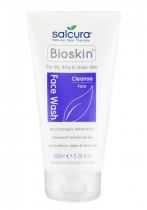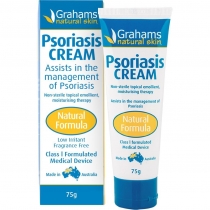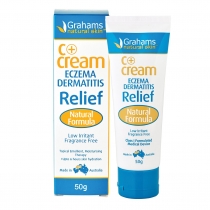Description:
Rosacea Cream
Developed to relieve the symptoms of Rosacea, with a low-irritant natural cream to provide moisture and create a protective barrier. It is intended for local application, where the skin is susceptible to or has been affected by inflammation (redness).
Directions for use:
Use as a cold cream; Place cream in fridge to cool down then apply to skin affected by Rosacea, rinse off using tepid water, and pat dry with soft towel. Follow up with your usual skincare regime. Can be used day and night and can be kept in the fridge so product remains cool on the skin.
Always read the label. Use only as directed if symptoms persist see your healthcare professional.
We have created a useful How To Guide that is packed full of information to help you get your Rosacea under control.
For Routine use:
Can be used as a (rinse off) cleanser and as a soothing (leave on) treatment moisturiser. For best results apply generously to areas affected by and susceptible to rosacea at least 2x daily. If symptoms persist consult your medical practitioner.
Ingredients:
Water Purified, Medium-chain Triglycerides, Cetostearyl Alcohol, Simmondsia chinensis (Jojoba) Seed Oil, Coconut Oil, Macrogol Cetostearyl Ether / Polyoxyl 20 Cetostearyl Ether, Tocopherol, Gluconolactone, Niacinamide, Taurine, Phenoxyethanol, Glyceryl Monocaprylate, Ethyl Ascorbic Acid, Retinyl Palmitate, Lactic Acid.
What is Class l Medical Device?
Grahams range of formulated medical devices have been designed to specifically redress imbalances in lipids, emollients, lubricating and functional lipids and to protect the skin with soft, flexible natural films to help protect and replicate the skins own natural moisturising system.
This very mild, emollient formulation contains:
- Essential fatty acids
- Osmo-regulating / humectant agents
- Vitamin C is an antioxidant with multiple positive effects on the skin including collagen repair, normalisation of photo damage, and anti-inflammatory properties
- Glucolactone, a very mild, non-irritating alpha-hydroxy acid that improves photodamage and dryness
- Passive anti-microbial agents (Taurine, Coconut oils, Lactic acid) and
- Excludes colour, fragrance or other known trigger substances
Colloidal Oatmeal
Clinical data and is approved for use by the FDA as an over-the-counter skin protectant. Colloidal oatmeal has been clinically proven to have an anti-itch affect. It soothes, softens, reduces water loss and moisturises skin thereby reducing redness and irritation. Colloidal oatmeal works great to help relieve dry, skin patches and more importantly Eczema.
Vitamin C
One of the many vitamins that the body & skin requires to function, clinical data suggest that Vitamin C is an antioxidant with multi positive effects on the skin.
Jojoba Oil
Simmondsia Chinensis Seed Oil is the fixed oil expressed or extracted from seeds of the desert shrub, Jojoba,
Simmondsia chinensis. Moisturisation by occlusion of the stratum corneum and/or replenishment of lamellar barrier lipids.
Vitamin B3 (Niacinamide)
Niacinamide, helps to improve barrier function, inhibit the oxidative glycation of proteins and improve levels of ceramides, free fatty acids, and the functional proteins to enhance the skin’s barrier function and reduce transepidermal water loss. Clinically non-irritating. In a 50 subject, investigated blinded study1 After 2 weeks of using a facial moisturizer containing 2% niacinamide, 79.2% (38/48) of subjects showed global improvement; after 4 weeks, 95.7% (44/46) showed global improvement. The investigator judged that the facial moisturizer was well tolerated by all subjects who completed the study. A strong positive correlation was found between Niacinamide level and both increases in SC thickness and barrier function improvement. Reported as a functional whitening agent when
combined with vitamin C.




